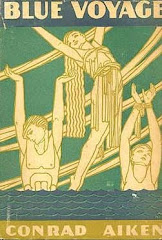
We have our second feature tonight from the Cambridge Film Guild in the shape of Turksib from 1929.
Directed by Victor A. Turin. Written by Yakov Aron, Viktor Shklovsky. Cinematography by Boris Frantsisson, Yevgeni Slavinsky.
Turksib is a fine Soviet documentary on the building of the first railroad across the Asian continent from Turkestan to Siberia. The focus is patriotic, not political, so Turksib is a celebration of the accomplishment, not a recruiting film. The land in Turkestan is rich, but there is enough water for only one crop, so the people grow grain. A thousand miles away in Siberia, there are abundant natural resources- timber and grain. So if Turkestan could get Siberian grain, they could grow cotton instead. The building of the rail link from Turkestan to Siberia- Turksib- is the subject of this documentary.
Much of the film consists of beautiful images documenting the hardworking people and good land of two very different regions of the Soviet Union. They use methods unchanged probably for hundreds of years, shearing flocks of sheep, with a migration of people and animals reminiscent of Grass. One excellent sequence shows a camel caravan caught in a sandstorm, and their precious cotton blown away by the raging storm.
The entire film is well planned to show the unity of different people and regions to a common goal. Just when the images have lulled the viewer, the film really takes off with the planning of the railroad. Director Victor Turin uses stop motion animation and maps to communicate the immensity of the undertaking by progressively increasing the intensity of the editing. In one memorable sequence, the first train goes down the newly constructed tracks. The workers who built the tracks had never seen a train. Rather than be scared, they are enervated and they chase after it on horseback in a sequence that would fit in any western.
Turksib was prepared for U.S. release by John Grierson, better known for his later work as father of the documentary film movement. The role of the adapter included writing new intertitles, making any necessarily political corrections, and making the pacing and narrative structure more like popular American films. This Kino on Video edition was seamlessly compiled from two different prints, so we have the benefit of the well-worded titles but the structure of the original Soviet release version.
Grierson's titles would work well as narration, as they use the images to draw specific conclusions on the wealth and vastness of the country and land. While the film is a little heavy on titles by modem standards, many times the titles are part of the film, sometimes alternating text titles and images.
The image is window boxed on left and right, and the quality of the 35mm elements is completely satisfactory. The score by Zoran Borisavljevic is mostly content to support the pastoral images but comes to life at the appropriate times. (Review © 1998 David Pierce)

Here is a short clip:
The audio is apparently a Discipline soundcheck at Musiques Volantes before the Turksib live soundtrack mix.








No comments:
Post a Comment